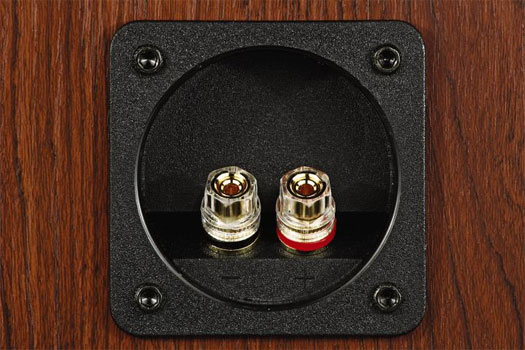Test Report: Axiom Audio M60 v3 Tower Speakers Page 2

Both clean, slick pop recordings and jazz sides fared equally well on Axiom Audio's M60 v3 in our tests. It also delivered a captivating wraparound e ect with movies such as the documentary Moog. (The M60 v3 is also sold as the left/right speaker in Axiom's various Epic 60 home theater systems.)
SETUP
The Axiom Audio M60 v3 required more care in setup than most of the other tower models I've recently reviewed, but in some ways, that speaks well of the product. After all, a car enthusiast might spend months optimizing the performance of a Corvette, but no one bothers to tweak out the engine on a Chevy Aveo. Like all speakers from the Canadian school, the M60 v3 is engineered for broad, even dispersion of sound, which means the midrange and treble don't vary much as you move off-axis. Thus, the aim of the speakers isn't critical. However, the M60 v3's ample output in the second octave of bass (40 to 80 Hz) makes the distance from the wall behind it important. Too close, and the bass will sound boomy. Too far out into the room, and the speakers may be uncomfortably close to your favorite listening chair. I ended up with the M60s placed so that their backs were 30 inches from the wall, almost double the distance I usually prefer.
After some initial listening without the magnetically attached grilles, I found that the M60s sounded just a bit bright to me, so I tried taming the treble a little by using the grilles. However, the well-designed grilles don't cut the highs much. Instead, I tried turning the speakers so that they pointed almost straight out, instead of angling them in so that they pointed straight at my listening chair. This gave me a subtle treble rolloff that my ears appreciated.
PERFORMANCE
Speakers from the Canadian school are revered for competence but seldom lauded for spectacular, exciting sound. Whether this is based more in reality or in American prejudice against Canadian culture I can't say, but it certainly wasn't the case with the M60 v3. Even as I broke the speakers in with a few nights of casual listening, I noticed dazzling feats of audio pyrotechnics. When I listened to "Again & Again," the opening cut from the eponymous debut of electro-pop duo the Bird and the Bee, sounds seemed to emerge from all around the room. Electronic bleeps and blips materialized way past the outside edges of the speakers and even directly behind me. Singer Inara George's primary vocal track centered rock-solid between the speakers, while her overdubbed backing vocals wrapped around me.
Any decent stereo system can produce the illusion of sounds coming from the sides or rear of a room; what's special about the M60 v3 is the precise placement and focused imaging of those sounds. I'm used to hearing this sense of envelopment from speakers with ribbon tweeters, or from electrostatic speakers, but not from speakers with plain ol' dome tweeters.
That said, the M60 v3 also did all those things that Canadian-school speakers are supposed to do - mainly, deliver a natural-sounding tonal balance. Clean, slick recordings such as Toto's "Africa" sounded dead-on, with extremely natural reproduction of the multiple vocals, the tight L.A.-studio-style percussion, and the perfectly performed guitar and bass tracks. Jazz sides fared well, too. When I played a 180-gram vinyl LP of John Coltrane and Don Cherry?s The Avant Garde (picked up at a swap meet for a measly $2), Trane's tenor sax and Cherry's trumpet sounded clean, expressive, uncolored . . . almost vocal.








































